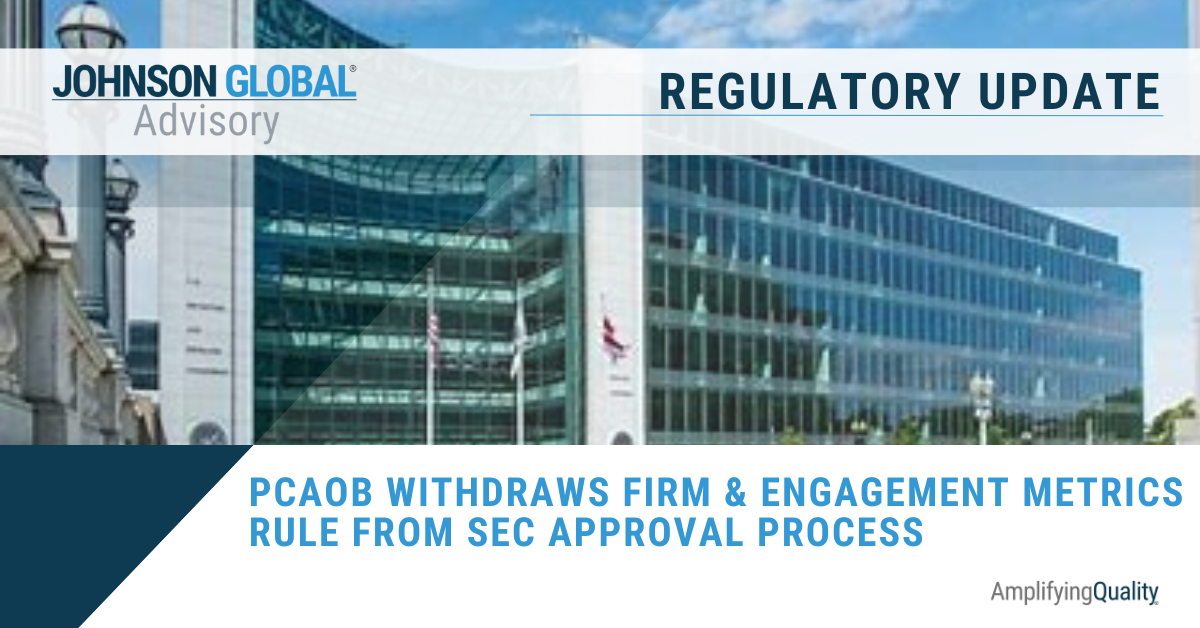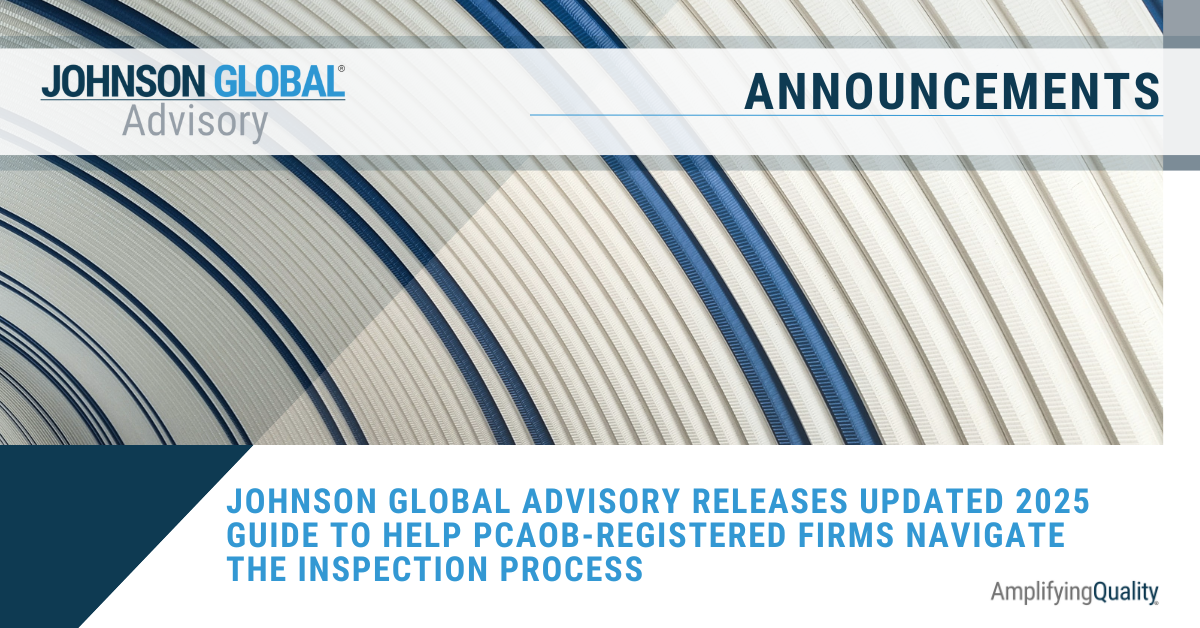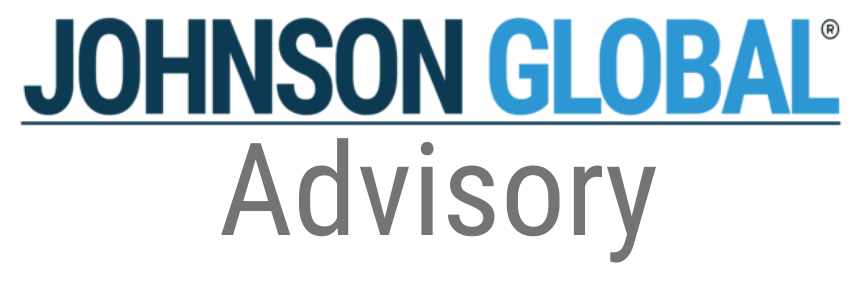Auditors Abound: The Differences Between Internal and External Audit

Auditors Abound: The Differences Between Internal and External Audit
Author: Shane Rogers and Jackson Johnson
It seems that in business, everywhere you look, interactions with auditors abound, whether management is responding to requests from internal audit, preparing for an external audit, or helping the external auditor prepare for their own audit from the PCAOB or a fellow peer inspection. Our regulatory environment is complex and given the overarching desire to preserve trust in the capital markets, various regulatory bodies have passed legislation creating a framework of diverse controls and safeguards. Companies must establish a control environment that ensures fair and accurate financial reporting; companies must also establish a system of internal controls that is effectively designed, operated, and monitored by management and thus internal audit entered the realm. However, because of potential conflicts of interest, independent auditors are critical to the financial markets, and thus external audit entered the scene. And of course, we all know about the failures of the self-regulated external audit industry, and thus the PCAOB entered the space.
We’ve been writing about the PCAOB for many years now. Today, however, we’re going to take a look at the differences between the roles of internal and external audit and how, when coordinated, they can create some powerful synergies.
Roles of Internal and External Audit
Let’s start first by defining the roles of internal and external audit.
Internal audit is typically a separate function within a company that has a formal mandate from the Board of Directors to review and assess the design and operating effectiveness of internal controls mitigating key financial and operational risks faced by the company. They often report directly to the head of the board, audit committee, Chairman or the Chief Executive officer, to ensure that important reported issues are sufficiently owned, actioned and mitigated. The primary focus of internal audit is to monitor the systems of internal control inside a company. While we often think of internal audit in the realm of financial reporting, internal audit’s scope can be much broader. Many companies use internal audit to objectively examine both financial and operational controls intended to mitigate key risks, and to report weaknesses in internal controls and to share forward-looking insights and feedback with management to help the business thrive. Internal auditors tend to have experience in the businesses that they review, and they use this knowledge to assess risks and evaluate the adequacy of internal controls. Although the name implies “internal” to the company, it’s important to know that many companies outsource internal audit to external companies; the distinction here is the focus of internal audit and who they report to. Internal audit is a corporate function with an objective mandate, which reports to the board, audit committee, or executive management.
External audit is as it sounds; the auditor that is external to a company. While they also report to management, their mandate is actually to protect investors and report to the audit committee. Whereas internal audit may be objective, depending on how reporting is structured, external auditors, by definition, must be independent of the company. External auditors are typically concerned only with financial reporting. Depending on the risks and the type of company, external auditors may test the design, implementation and operating effectiveness of internal controls over financial reporting, but they will always perform substantive procedures to audit the financial statements. External auditors understand the operations of a company, but they do not concern themselves with operational risks and controls unless they could potentially impact financial reporting. Whereas internal audit knows the client in and out, external audit knows the accounting and audit industry and often knows the client’s industry in and out.
External Audit Reliance on Internal Audit
When performing an audit of the financial statements, especially when it’s an integrated audit leveraging controls reliance, the auditing standards allow for external auditors to rely on the work of internal auditors. Traditionally, external auditors use internal audit to assist with the audit of internal controls over financial reporting and other relevant functional areas given internal audit’s knowledge base and objectivity. Though permissible, it is rare to use internal audit with substantive testing.
When relying on internal audit, the external auditor must evaluate both the objectivity and competence of internal audit. Objectivity is paramount since internal audit is still employed and/or engaged by management. Objectivity considers many of the following:
• Who makes the hiring / firing decisions around internal audit?
• Who controls performance evaluations and compensation decisions?
• How are internal auditors assigned tasks?
• Does the internal Audit team have sufficient financial and operational risk experience?
• What is the structure for supervision and review?
• Are internal audit workpapers of sufficient quality?
• Who does internal audit report to?
In theory, internal audit should always have a direct line of communication with the board of directors and the audit committee where they can raise any issues they identify.
Competence is more a matter of education and experience. External auditors typically review CVs as well as the internal audit organizational structure, audit methodology, and supervision and review model.
If internal audit is both objective and competent, then the external auditor may leverage the use of internal audit. The extent to which external auditors use internal audit will be a matter of professional judgement (as is everything in audit). As the risk of material misstatement increases, the less external audit will rely on the work of internal audit.
Depending on risk, external auditors will need to perform a mix of review, reperformance, and independent testing. All work from internal audit must be reviewed by the external auditor. Review includes evaluating internal audit’s sample size, the test procedures applied, the timing of the testing (and any year-end roll forward procedures) and the conclusions reached. Although technically leveraging internal audit’s work, the external auditor takes full ownership.
As the risk associated with the audit account increases, external auditors should consider a mix of reperformance and independent testing. Reperformance is as it sounds: reperforming the work of internal audit using the same samples and applying the same procedures to the same audit evidence. Independent testing, in terms of controls, means testing the same or similar controls and evaluating the conclusions reached. As a rule of thumb, external audit should be comfortable that it has performed sufficient testing in higher risk areas and should specifically perform direct testing on any areas that pose a significant and/or fraud risk.
Ostensibly, there is judgment involved in determining when and how to leverage the work of internal audit and whenever there is judgment, the key is documenting those considerations.
While external audit can rely on internal audit, the inverse is not true. Internal audit is inherently an extension of management and management’s controls and internal operations must be entirely independent of the external auditor. However, internal audit can leverage much of the knowledge and experience of external auditors to help improve and refine processes. Through planning discussions, internal auditors and external auditors are sharing information and views about perceived risks and best practices within the industry. There’s a fine line crossing over into consulting, which would breach independence, but external auditors often issue management recommendation letters sharing their thoughts from the audit and this same information can be discussed with internal auditors who often have more agency and insight into the company to drive improvements.
Best Practices
Considering the overlap between the two audit functions, let’s explore some of the best practices when working together.
First and foremost: coordinate! We encourage internal and external auditors to maintain close lines of communication throughout the year and well before the year-end audit crunch time; operating as trusted partners, both internal and external audit teams should look for opportunities to leverage each other’s perspectives for the common good. The quality of the ongoing relationship between external and internal audit is important as is the perceived quality of internal audits work-product. Scheduling planning calls and regular touchpoints throughout the year and during the year-end audit will help ensure a smoother delivery of testing work. Establishing a shared overall timetable and a diary of events helps to keep both internal and external audit on the same page and helps facilitate discussions around changes year over year, including scoping of accounts, locations and controls. While internal audit can offer input and insight, external auditors must maintain control in setting the scope for the audit, including selecting controls to test, setting sample sizes for testing and agreeing on testing procedures.
As with any audit, set clear timelines for performing, documenting, and reviewing planning, walkthroughs, interim and year-end testing. Once the timeline is agreed upon, keep regular touchpoints to monitor status and progress of the audit.
While external audit can leverage much of the work of internal audit, it is important that internal audit and external audit perform
joint walkthroughs. Walkthroughs often serve as the main procedure to understand the business processes and evaluate the design and implementation of controls. As this is a critical component of risk assessment, external audit must attend/perform these walkthroughs.
As testing begins, internal audit should regularly document and external audit should review work timely. Perhaps most important is dealing with issues when and as they arise. Because internal audit does most of the controls testing, its incredibly important that potential control exceptions be raised and discussed, both with management, as well as with external audit so that all parties are involved in the discussion and can adapt accordingly. Again, this speaks to the importance of regular touchpoints between internal and external audit to ensure all issues are triaged appropriately and to ensure a unified front between internal and external audit to both management and the audit committee, free of any mixed messaging.
Looking Forward
As the world debates various ESG initiatives, some sort of ESG reporting will be required, whether from regulators in Europe or domestically by the SEC, or simply because investors demand it. The ESG environment is still in its infancy and there’s no one set of standards for company reporting or for independent verifications of ESG reporting. However, we’d venture to say it will fall within the realm accounting and finance, including internal audit, within a company and the most logical external party would be independent external auditors. Time will tell, but certainly there is high likelihood of continued coordination and collaboration. Until then, it’s important for internal and external auditors to continue to coordinate and share knowledge improving internal operations within companies and enabling higher quality (and more efficient) audits!
Key Takeaways
• Internal audit has a clear mandate from the Board of Directors to be objective in assessing risks and the design and operating effectiveness of internal controls; internal audit has a strong knowledge of risk, processes and internal controls that can assist external audit.
• External audit is entirely independent of the company and they know accounting, auditing and client industries in and out; they can share valuable insights and feedback for internal audit.
• Internal audit must have the proper competencies and MUST be objective (i.e. have a direct line of communication to the board and/or the audit committee).
• External audit can leverage much of the work of internal audit, but the external auditor is still responsible for obtaining sufficient appropriate audit evidence to support the opinion, so the external auditor owns all final decisions.
• When leveraging the work of internal audit, external auditors should incorporate elements of review, reperformance and independent testing, depending on the risk. Internal audit should never be used for audit areas with significant and/or fraud risks.
• As with any audit, proper planning and coordination with all parties involved is critical. During planning, agree on project timelines, scope of work, expected deliverables, and communication protocols, including frequent touchpoints.
Jackson Johnson, CPA is president of Johnson Global Accountancy, a public accounting and consulting firm with clients throughout the world. He works directly with PCAOB-registered accounting firms and other firms to help them identify, develop, and implement opportunities to improve audit quality. His experience includes nearly six years with the PCAOB, where he worked with small and medium-sized accounting firms throughout the world, including foreign affiliates of large international accounting firms, in the areas of firm quality control and ICFR audits of financial statements.
Shane Rogers, FCA, MBA, Independent Risk and Audit Consultant, Trainer, and Executive Coach, is the Founder of Rogers Global Audit Advisors, LLC (rogersglobalaudit.com). Shane is also President of CAW (Chartered Accounts Worldwide) Network USA and has 25+ years of experience in re/insurance, fintech, and investment banking. Shane helps businesses respond to risks and thrive by applying progressive, agile auditing and is a catalyst for positive risk culture and change.










Johnson Global Advisory
1717 K Street NW, Suite 902
Washington, D.C. 20006
USA
+1 (702) 848-7084

